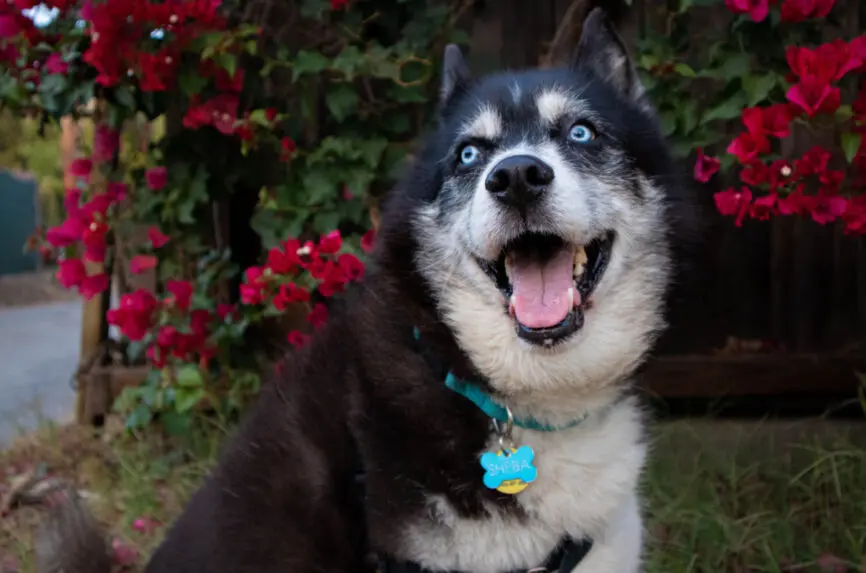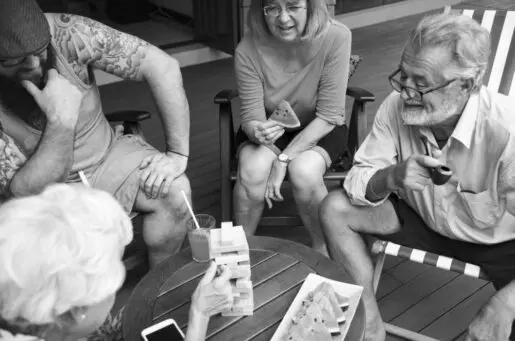Bioethics Forum Essay
A Clinical Ethicist Reflects on the Life and Death of a Beloved Pet
Ten years ago, I called my older brother for his counsel and asked, “Am I ready for a dog?” I listed reasons why one might benefit me and my life: company on quiet nights, motivation for daily exercise, a companion for camping trips. However, my hesitation was not whether a dog was right for me, but whether I was capable of rising to the occasion. To evaluate my readiness, I reviewed my finances, work schedule, and even my canine behavioral knowledge. In the midst of my indecision, my brother’s partner grabbed the phone and exclaimed, “Ryan, just do it!” A week later, I adopted a 4-year-old Siberian husky, Sheba, from the Michigan Humane Society.
In the proceeding months, I assumed that she understood that I was her owner, so she would loyally follow my commands. But she did not. I desperately begged her to sit, heel, or wait, but she refused. I hoped that her instincts would eventually kick in and she would finally perform on command. Meanwhile, she was anxious and took out her energy on carpets, couches, and doorways. I was, of course, taking the wrong approach. Not only are huskies famously stubborn but, perhaps most importantly, I had not earned her trust.
With advice from my father, I paid closer attention to her body language to understand what she needed. Instead of giving her commands, I proactively guided her behaviors through rewards. I provided treats when she stayed by my side on our walks. I held treats by her nose to prompt her to sit and lie down. I distracted her when she became anxious, redirecting her to a puzzle or toy. I disciplined my own life too. I established a rhythm of sleeping, eating, and working so she knew what to expect from me. She not only fell into the rhythm of my life but also learned to trust me. Through these changes, I saw my role as less of an authority figure and more like a steward, shepherding her life on this earth.
Sheba’s health began to decline, and in 2023 urine and blood tests determined that she had kidney damage, likely from a serious disease. To determine the cause and whether it was treatable, my veterinarian offered subsequent testing: a repeat blood sample, imaging, and perhaps a biopsy.
Deciding to pursue subsequent tests evoked complex moral questions. In my role as a clinical ethicist, I regularly explore the risks and benefits of proposed treatments, especially for terminal diseases. But for Sheba this moral question felt unique. Not only was I unable to psychologically distance myself from this decision, I had to consider: What are my moral obligations to an animal for whom I am a steward? Unlike with human medicine, I could not solicit her preferences. I had no statement of her values, no sense of how she defined quality of life, and, obviously, no way to obtain these from her. How does one decide for another who cannot appreciate the clinical circumstances and decision at hand?
To decide, I drew from her past behaviors. I reflected on the way she furiously shook in examination rooms, despite the gentle approaches of her veterinarians. She feared being poked and prodded or stuck with needles. It was impossible to deliver medications orally, too, even when I wrapped pills in cheese or bacon. Knowing this, I reasoned that she wouldn’t want the invasive tests or the treatments that might follow. In other words, examinations would cost her psychological comfort and happiness. Additionally, it was unclear whether doing so would meaningfully extend her life, as she was already a senior, nearing the higher range of life expectancy for huskies.
Yet can a dog “want” to forgo curative treatments for comfort? Was I constructing values on behalf of my dog? Did I graft “personhood” onto an animal, and thereby misunderstand my obligations to her? Or was my analysis rooted in a simple cost-benefit analysis, selecting the path that minimized discomfort for her? Further, what were my obligations to be a steward – to ensure not only that she had a flourishing life, but also a “good death?” And what does a good death look like?
In the following months, she rapidly deteriorated, though her palliative medications relieved the worst of her symptoms. I walked her at a snail-like pace. My apartment became filled with training pads to absorb her waste, and I cycled through washable diapers. I cleaned her regularly. I sprinkled her food with enticing treats, the only way she would eat. In a few instances, she woke me up in the night, yelping from confusion. On those nights, I slept in the living room by her favorite sleeping spot until she dozed back to sleep. And despite its burdens, these weeks were filled with joy. Sheba smiled often. She savored every opportunity to walk outside, delighted in her treats at mealtimes, and played with her kitten brother, Hermes.
A new moral inquiry emerged: When would be an ethical time to euthanize my dog? Too early and I would be robbing her of time she was enjoying her life. Too late and I worried she would experience unnecessary physiological suffering, which I could quickly alleviate. Some friends and family relayed the advice “better on a good day than a bad day,” while others recounted their guilt for euthanizing their animals “too soon.”
Sheba joined me for one last road trip in a move back to Los Angeles, where she and I had lived the majority of our time together. I had hoped to reunite her with our community of friends and enjoy more sunny afternoons napping outside. Yet, on our first morning there, I found her lying on her bed unable to stand up, lift her head, or eat and drink. She had a tired look in her eyes and let out a deep sigh.
Within minutes, I scheduled an appointment with a local veterinarian for her to be euthanized.
I am grateful for my profession as a clinical ethicist. It has equipped me with the clinical knowledge and normative frameworks to navigate complex questions at the end of life. And while the concepts I drew on helped put words to my moral experience, the frameworks alone could not help me decide. The decision to euthanize Sheba came from something deeper – a lesson that Sheba taught me in our first months together. As her steward, I had a moral obligation to listen to her, on her own terms, and make decisions with her.
I will always remember my final moments with Sheba, surrounded by me, her veterinarian, and our best friends, as we said our loving good-byes. Today, six months later, I have no lingering uncertainty or remorse about the decisions I made, or how long I waited. And, on other days, I wonder if she knew we were driving back to Los Angeles – and held on until I was home, surrounded by our friends – before letting me know it was time to make our final decision together and say goodbye.
Ryan J. Dougherty, PhD, MSW, HEC-C is a health care ethics consultant and scholar whose work explores how social systems shape ethical decisions at the bedside. Ryan J. Dougherty LinkedIn
[Photo: Sheba]














Ryan, this is a beautiful reflection on the love you shared with Sheba and how you supported her through life and your last goodbye. Thank you for sharing this thoughtful piece and encouraging us all to listen well in this life.
Like the Ryan and the Hastings Center editors, I have sensed that we humans can learn much about life from the death of a pet. A decade and a half ago, a small group of Florida residents sponsored a two part symposium on end of life care, which we held at the downtown Tampa Center of the Stetson College of Law. The first part was titled “End of Life Care After Terri Schiavo.” The second was titled “What We Can Learn About Life From the Death of A Pet.”
The first had a panel of experts, which included the third, guardian ad litem for Terri Schiavo, the head of palliative care for the region’s top ranked hospital, the head of the medical ethics committee for a regional health system and the author of a novel describing the challenges faced as her mother was dying. The second was led by an internationally-known veterinarian, Dani McVety, who co-founded Lap of Love, a nationwide network of veterinarians whose practices are focused on hospice care and euthanasia for pets.
Those with decision making capacity– for both humans and pets, face many of the same issues. Beyond the question of whether to seek medical aid in dying, there remain two, critical questions for those who answer “Yes:” when and how.
While medical aid in dying for humans is now a legal option in 12 U.S. jurisdictions, all require a confirmed diagnosis of a terminal illness and that the patient be able to self-administer the medications. In Canada, neither is required, and their supreme court unanimously ruled that medical aid in dying is a constitutional right for Canadians. Does that seem like the United States treats pets more compassionately than humans when it comes to end of life care?
Thank you Ryan for this beautiful reflection and for placing words where is very difficult to find them. . We don’t own pets, we should deserve them and honor them. And that was what you did with Sheba.
Thank you for sharing the experience of saying goodbye to your beloved Sheba. Our Girls, Golden Retriever sisters, each had their ways of telling us it was time. Jillie told us she was done when she stopped “chewing the green hair” off her Kong tennis balls. Jeffie mourned her sister’s departure for a while, chasing after another dog who looked just like her departed sister. Then, Jeffie found a new, independent version of herself. We enjoyed her for another couple of years. Perhaps I’ve blocked out her denouement. We saw it coming only a year after her Jillie left. She quit eating. Even her favorite “sick meal”, the chicken and rice with which we could entice her, was no longer palatable. She was in pain. For both of them, they seemed to say, no more.
Our pets have so much to teach us about life and living. From beginning to end, you illustrated the door through which intellectual understanding can’t buy admission. We can only enter by hearing the patient: our loved ones.